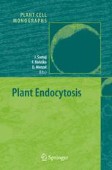Search
Search Results
-
Carbene Complexes of Heme Proteins and Iron Porphyrin Models
The possible formation of carbene complexes of cytochromes P450 enzymes in various metabolisms of xenobiotics is first described. In view of these...
-
Ferrocene–Peptide Bioconjugates
This chapter sketches an outline of ferrocene–peptide bioconjugates. A variety of ferrocene–peptide bioconjugates have been designed to induce...
-
Catalytic Nickel–Iron–Sulfur Clusters: From Minerals to Enzymes
The geochemical theory of the origin of life proposes that primordial, pre-biotic reactions were carried out in a metal-sulfide-rich environment...
-
Introduction
The Caspian Sea, the largest enclosed basin on the planet, is distinguished by special natural conditions, contains rich natural resources...
-
Pollution of the Caspian Sea
The pollution of Caspian Sea waters and bottom sediments was described on the basis of long-term monitoring data from 1978 to 2004. It was shown...
-
Introduced Species
Five species of diatom algae, ten species of epiphyte-fouling algae, seven species of plankton invertebrates, 21 benthic organisms and three...
-
Brominated Flame Retardants in the Great Lakes
Brominated flame retardants in the Great Lakes have not been as well studied as many of the polychlorinated pollutants, especially PCBs, but in the...
-
Polycyclic Aromatic Hydrocarbons in the Great Lakes
Polycyclic aromatic hydrocarbons (PAHs) are produced during the incomplete combustion of organic material. They can also be produced through...
-
Economic and International Legal Dimensions
The Caspian Region has abundant hydrocarbon resources (oil and gas), as well as biological resources (fish), particularly the unique sturgeon,...
-
Kara-Bogaz-Gol Bay
Kara-Bogaz-Gol Bay is a large lagoon east of the Caspian Sea and normally covers an area around 18000 km2 and is only a few meters deep. It is...
-
Microwave-Assisted Synthesis and Functionalization of 2-Pyridones, 2-Quinolones and Other Ring-Fused 2-Pyridones
2-pyridones are important heterocycles with great applicability in medicinal chemistry and this core structure can be found in compounds with...
-
Total Synthesis of Marine Macrolides
Recent progress (2002–2005) of total syntheses of bioactive marine macrolides, lasonolide A, zampanolide, dactylolide, and leucascandrolide A, was...
-
Applications of Flexible Molecular Descriptors in the QSPR–QSAR Study of Heterocyclic Drugs
Various formulations of optimal descriptors introduced by different authors during the last 10 years are discussed for the special case of...
-
QSAR and Molecular Modeling Studies of HIV Protease Inhibitors
Acquired immunodeficiency syndrome (AIDS) and its related disorders, caused by retrovirus human immunodeficiency virus (HIV) are a major health...
-
Auxin Transport and Recycling of PIN Proteins in Plants
Polar transport of the phytohormone auxin is mediated by plasma-membrane and endosome localized carrier proteins. PIN proteins are the best...
-
Conclusions
This conclusion completes one more review concerning the natural condition of the Caspian Sea and the principal trends of change in the second...
-
Natural Chemistry of Caspian Sea Waters
Principal features of the natural chemistry of Caspian Sea waters are assessed: the salt(ionic) composition, dissolved oxygen, active reaction...
-
Pesticides in the Great Lakes
Pesticides have been widely and heavily used in agriculture in the Great Lakes Basin (approximately 93000 tons were used in 1995 alone). Herbicides...
-
Physico-Geographical Conditions of the Caspian Sea
The main physico-geographical features of the Caspian Sea are under consideration. They include brief description of the coasts, bottom relief and...
-
Polychlorinated Biphenyls in the Great Lakes
This chapter reviews the scientific understanding of the concentrations, trends, and cycling of polychlorinated biphenyls (PCBs) in the Great...
